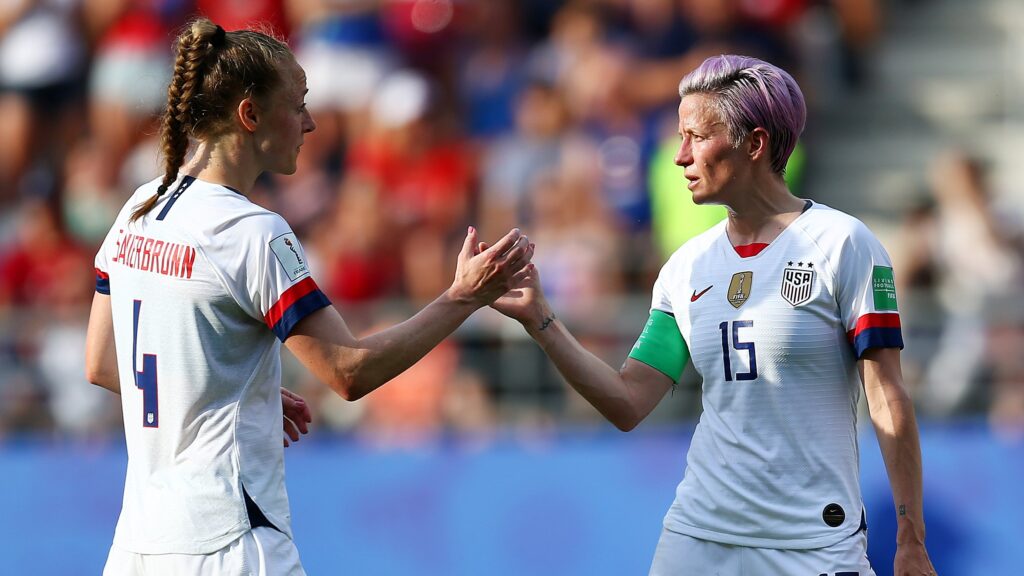
Since the FIFA Women’s World Cup was first played in China in 1991, the tournament has been held eight times and been won by four nations. The United States, the defending champions, have won it on four occasions, while Germany have won it twice. Japan and Norway have a title each.
Apart from China, five other nations have hosted the tournament. The United States has done so twice, with the other hosts being Canada, France, Germany, and Sweden.
From July 20, 2023, Australia and New Zealand will host the ninth edition, and 32 nations will participate, an expansion from the previous 24-nation format.
This will be the first time the Southern Hemisphere has hosted the Women’s World Cup, and the first time the tournament will be played in two different nations. It is also the very first time two different soccer confederations will co-host it, since Australia is a member of the Asian Football Confederation (AFC) and New Zealand is part of the Oceania Football Confederation (OFC).
Since 2015, the Women’s World Cup has picked up steam in both in-stadia attendance and televised reach. Over 1.3 million fans attended the 52 matches hosted across six cities in Canada in 2015, and over 1.1 million people came down to watch the matches across nine cities in France in 2019.
Nearly 764 million viewers watched the 2015 World Cup matches on television, while the 2019 edition in France reached over 1.12 Billion viewers across the 205 territories it was broadcasted in, an increase of nearly 47%.
As many as 481.5 million people accessed the tournament via digital platforms in 2019, a massive jump of 460% since the seventh edition in 2015.
The 2019 final, between Megan Rapinoe’s USA and Sari van Veenendaal’s Netherlands was seen live by over 260 million viewers, more than double the number who watched the one-sided 2015 final between the USA and Japan.
The rapidly growing viewership has also translated into dollars, with the 2015 edition generating $73 million, and the eighth tournament in 2019 having revenue of over $100 million.
This record growth in viewership and revenues, albeit still a fraction of the men’s game, has given FIFA the confidence to separate the broadcast rights of the Women’s World Cup from the men’s tournament for the first time.
This is a massive litmus test for the Women’s World Cup, and after initial hiccups where broadcasters had made ludicrous bids ranging from 300,000 Euros in Italy to 9 million Euros in the UK, which is about 0.2% to 8% of what the broadcasters offered for the previous Men’s World Cup in Qatar in 2022, the tournament is finally seeing a ray of hope.
With a month to go before the 64-match tournament commences Down Under, FIFA has extended its existing media rights partnership with the European Broadcasting Union (EBU), ensuring that the upcoming World Cup will be broadcast on free-to-air linear television networks across 34 European territories; in the UK, BBC and ITV have decided to share broadcasting rights, and FOX Sports will be the broadcast partners in the US.
Beyond the confirmation of the broadcast rights, the other bright spot is that Fox Sports in the US has already managed to sell 90% of the tournament’s ad inventories, and the ad revenues from the tournament are expected to be up by 50% from 2019, likely to touch US$150 Million.
Automotive, insurance, technology, and telecommunication brands have been the most active supporters, with Verizon sponsoring the pre-game show, Volkswagon, the German car manufacturer, partnering for the half-time show, and Google sponsoring a bridge show between matches.
The other big point that the Women’s World Cup has scored before the tournament begins is that it has taken a strong stance against engaging Saudi Arabia, the nation that has taken considerable interest in multiple global sports over the last two years, as a key brand sponsor despite the dollars available. Given the country’s controversial human rights record, especially against its women, Australia and New Zealand, the hosts, convinced FIFA not to proceed with the sponsorship deal with Visit Saudi.
With 19 brand sponsors and partners in tow, over 1 million tickets sold, the majority of broadcasting rights in place, ad spots being sold at higher rates, and an ethical stance to boot, the FIFA Women’s World Cup 2023 is all set to break records and make a statement.
The only other major glitch this women’s tournament needs to fix is equitable pay and prize money, a goal that FIFA has committed to working towards by the 2027 cycle.
For now, let us get ready to watch and cheer some fantastic football, especially from emerging teams like Haiti, Panama, Portugal, Morocco, Ireland, Vietnam, Zambia, and The Philippines.



